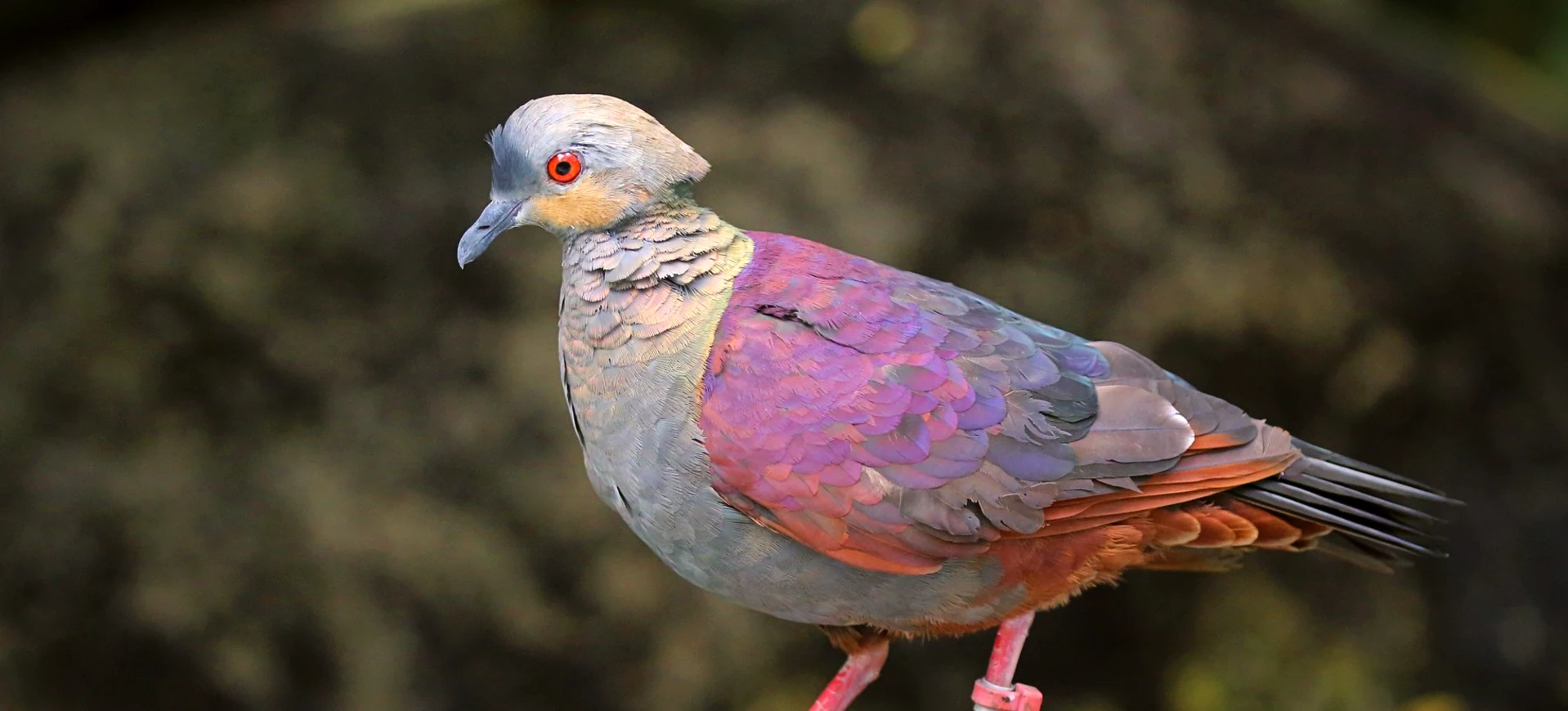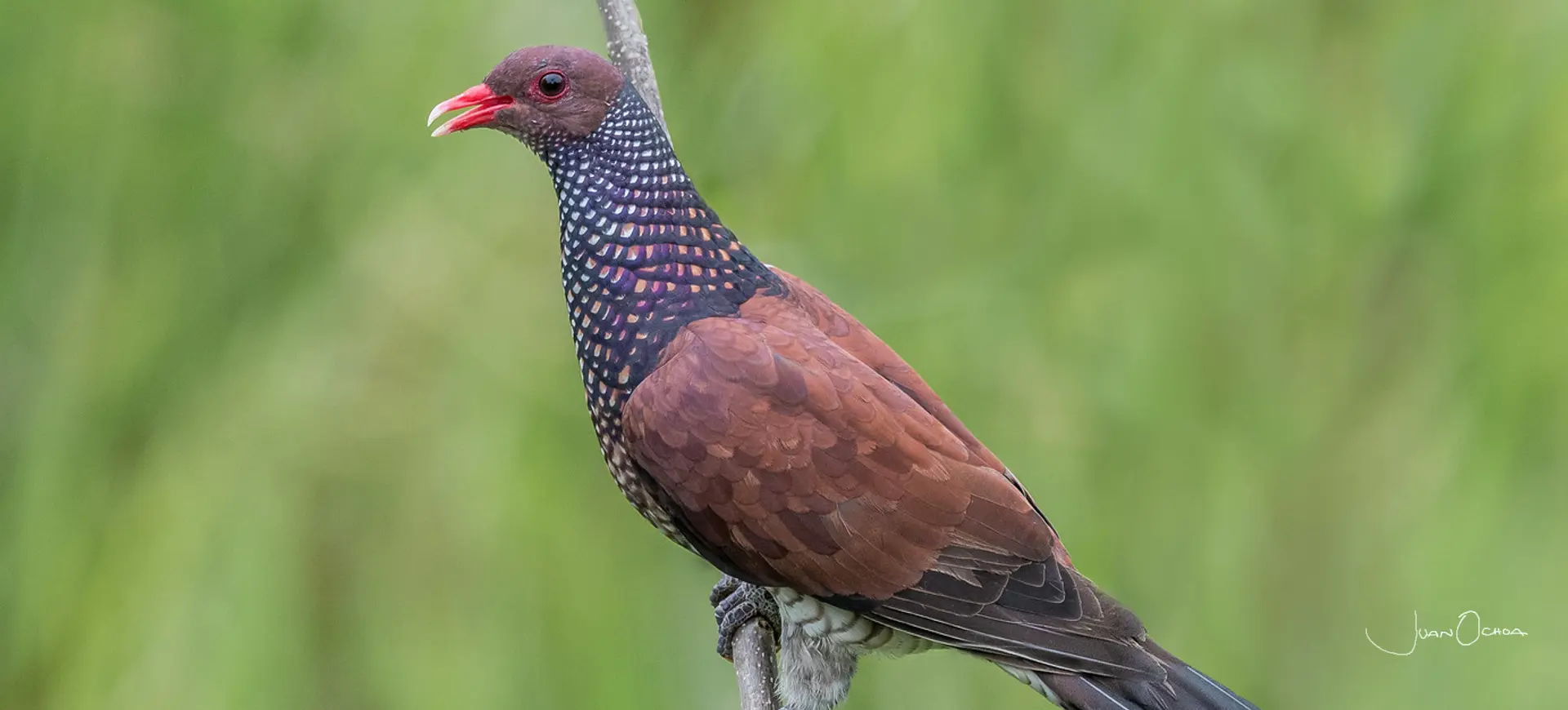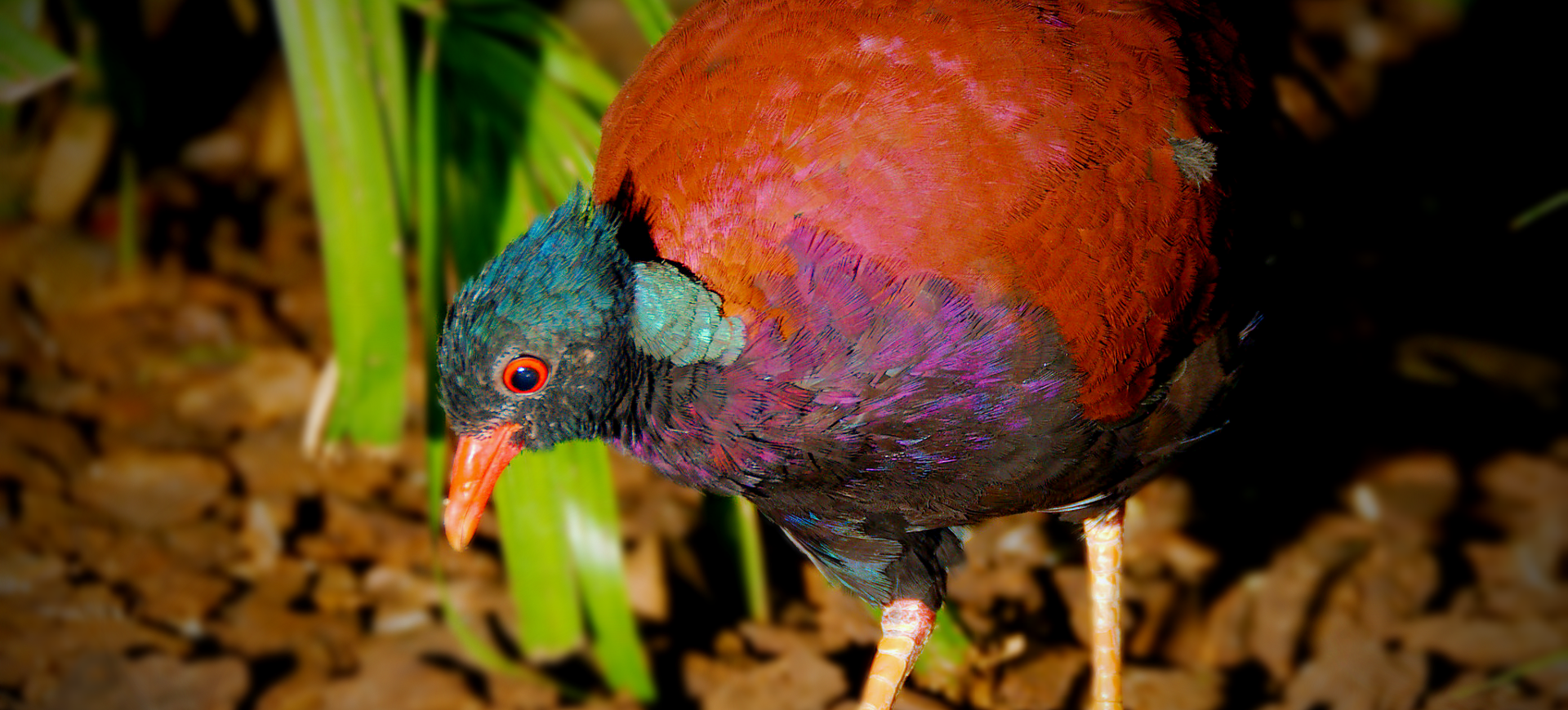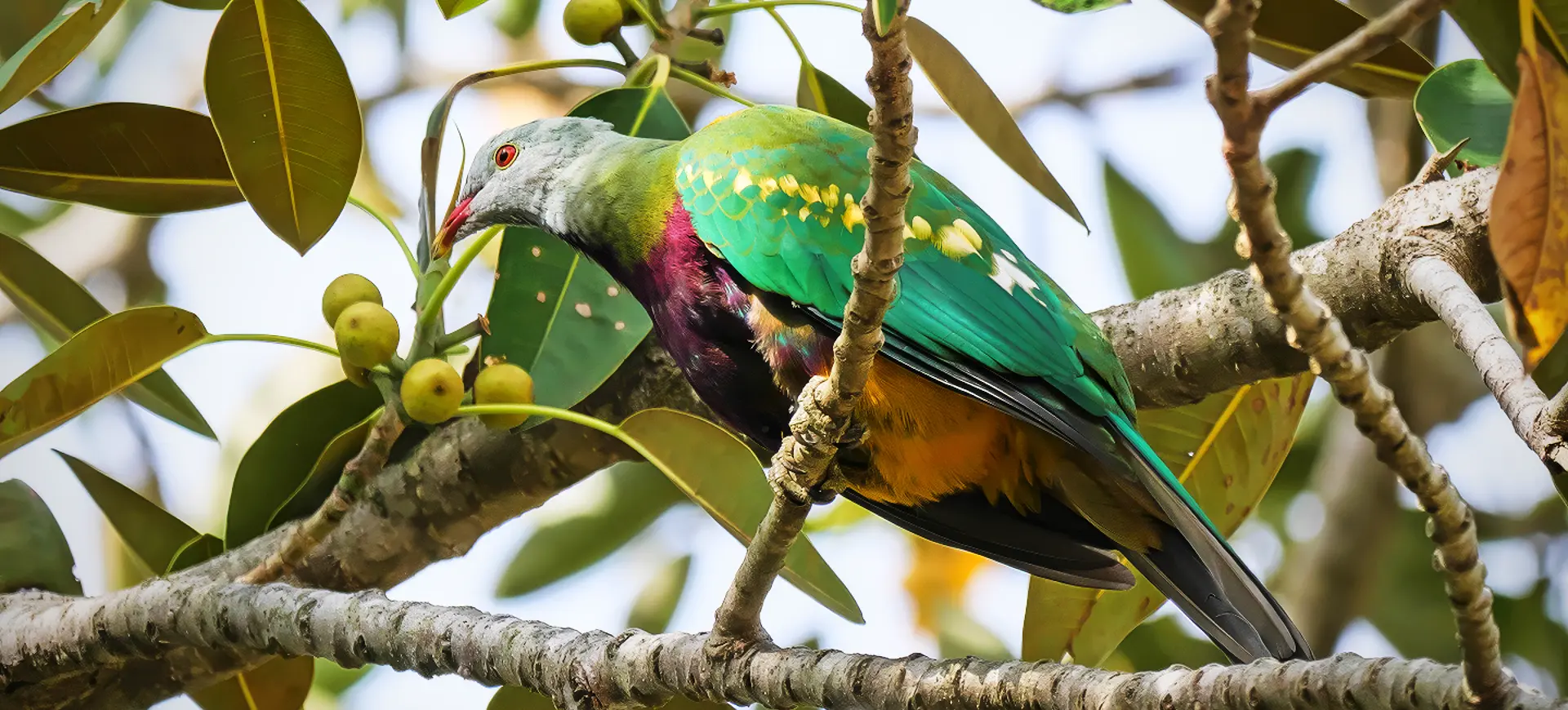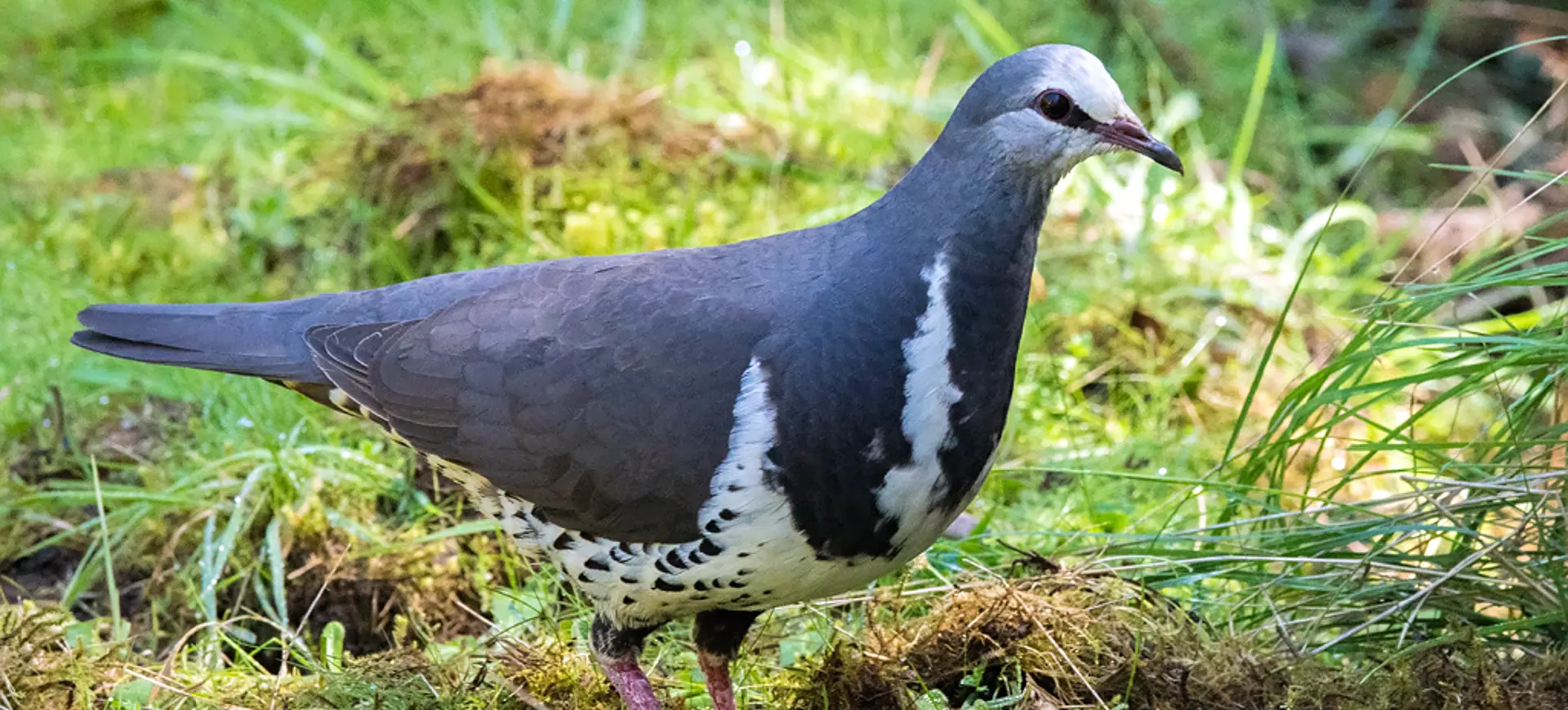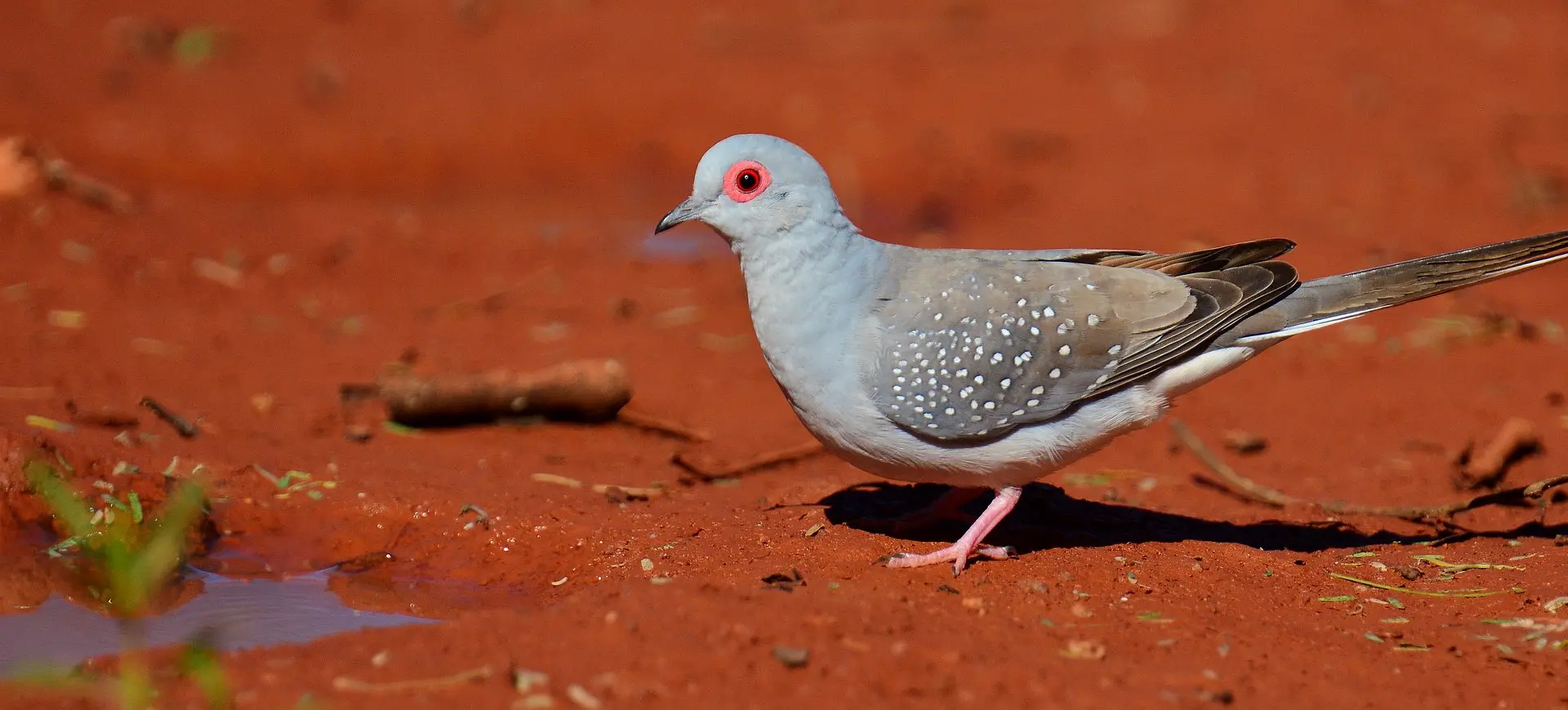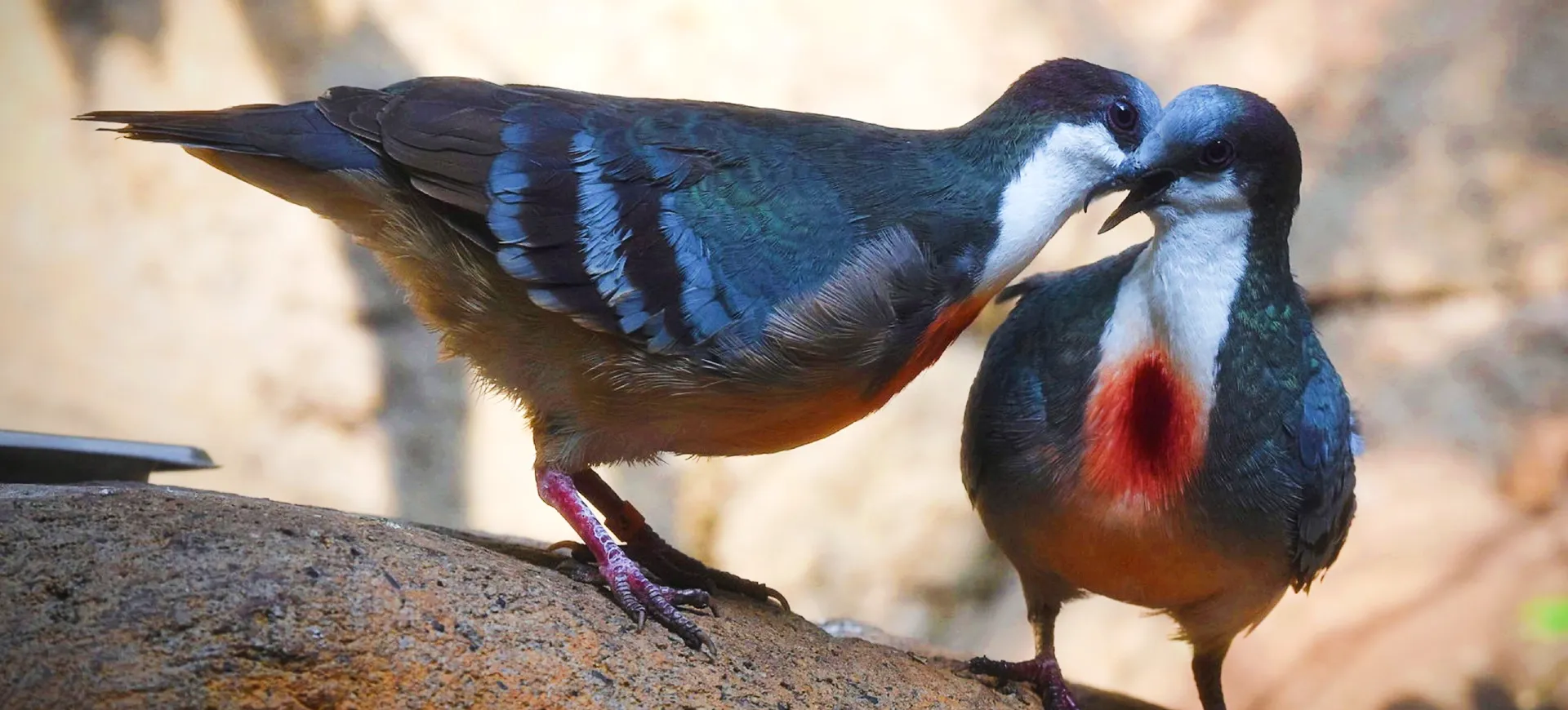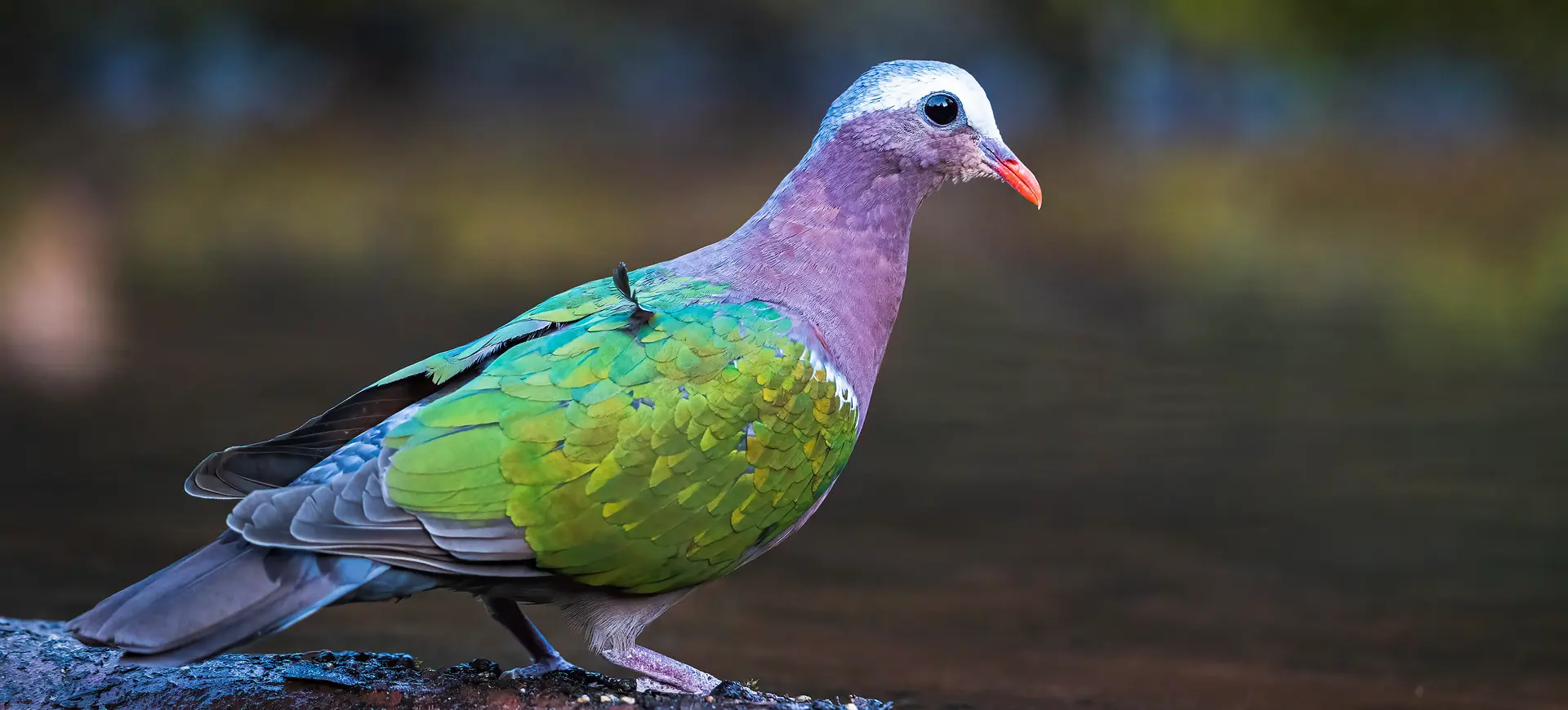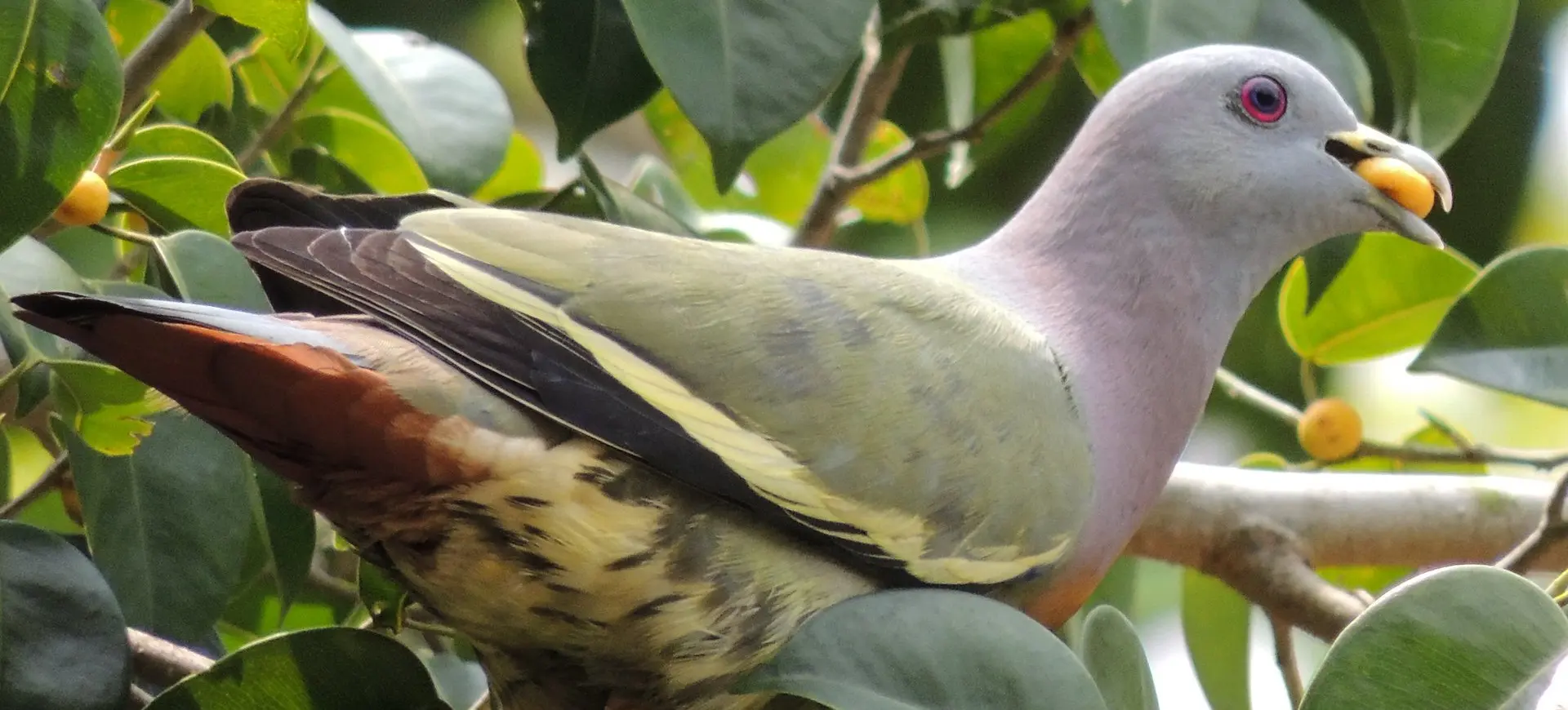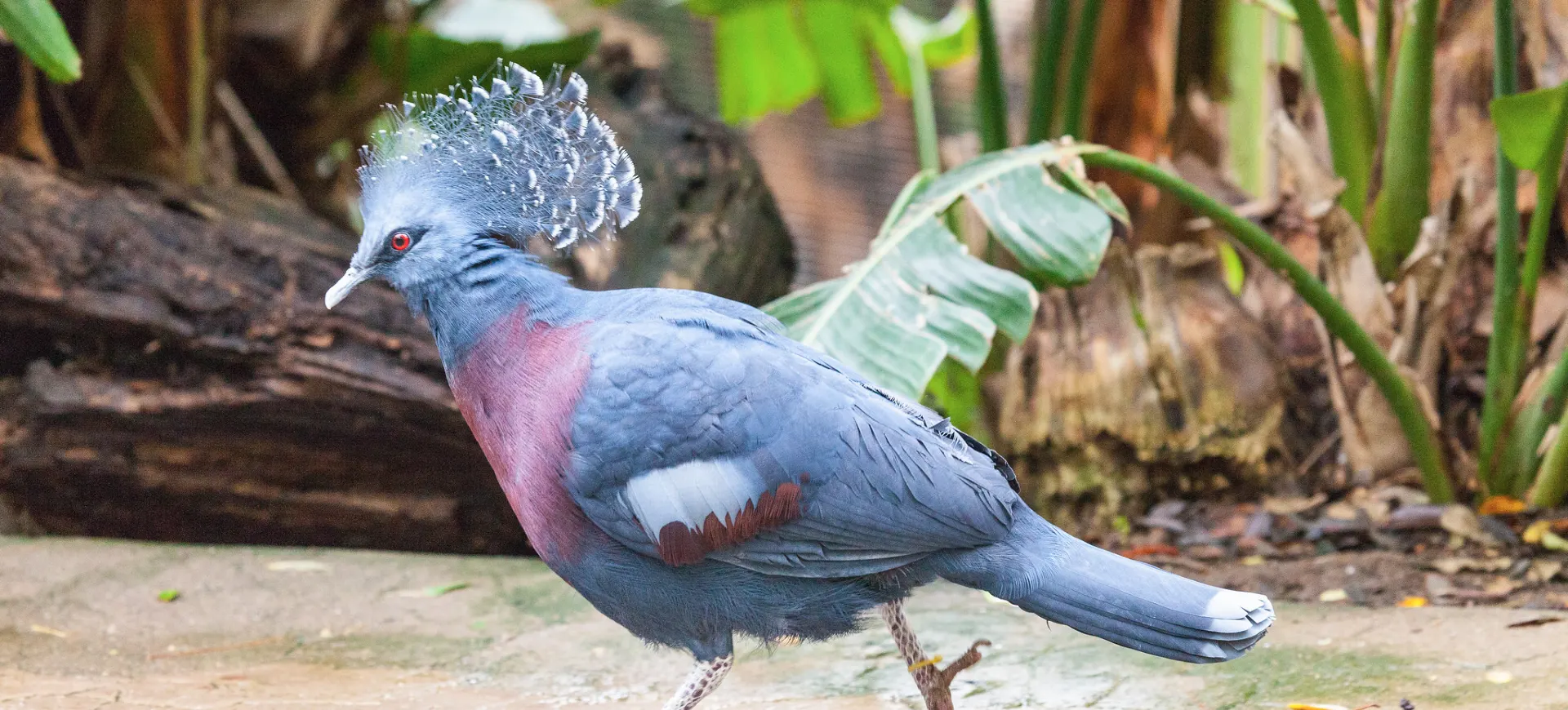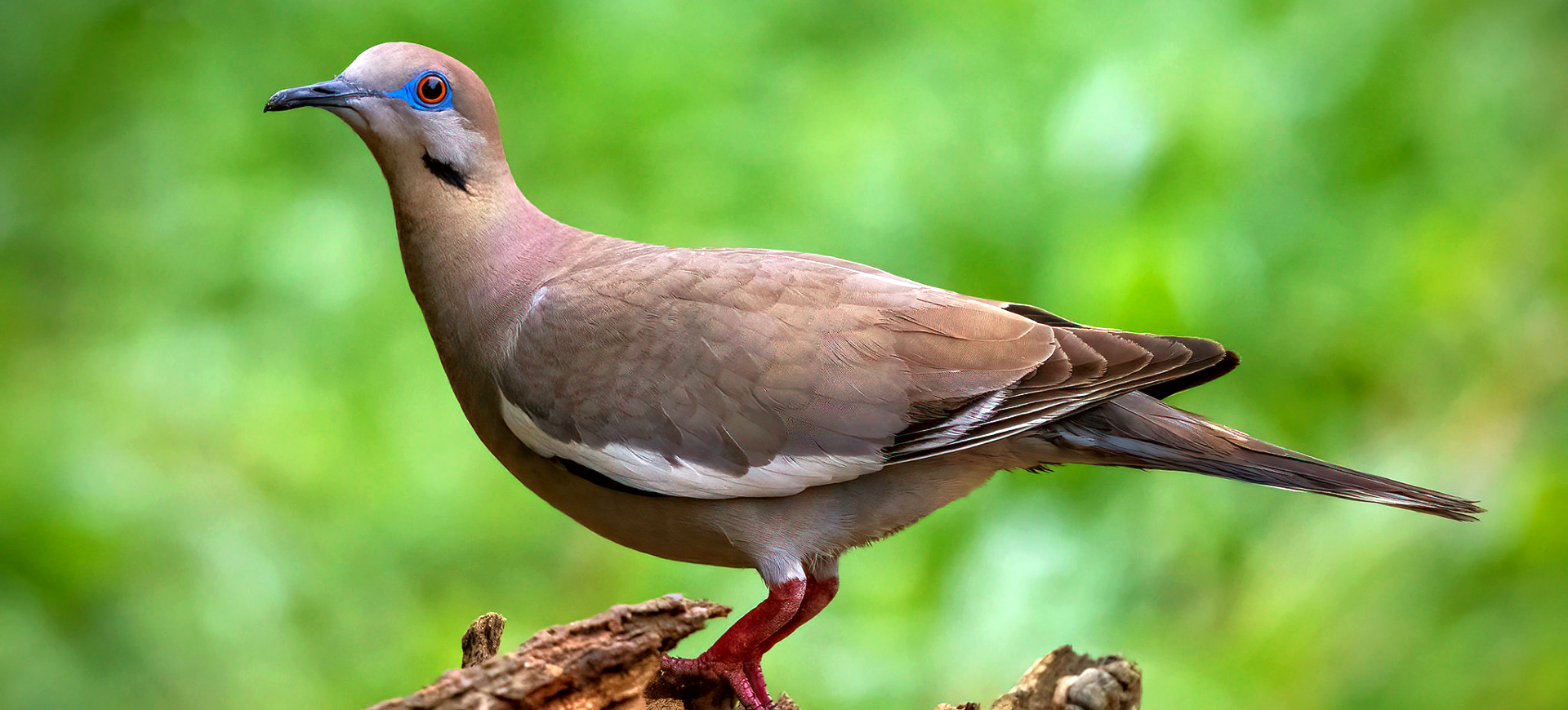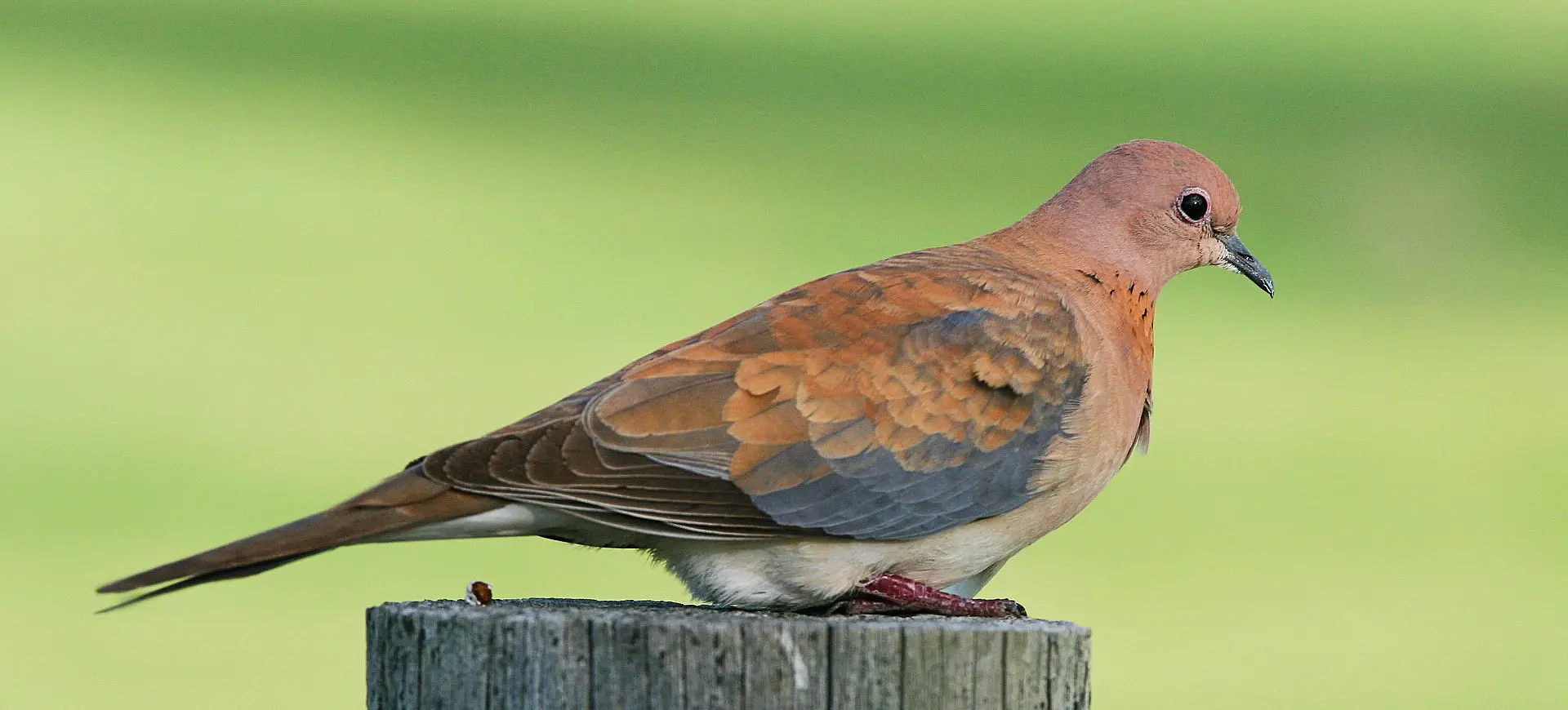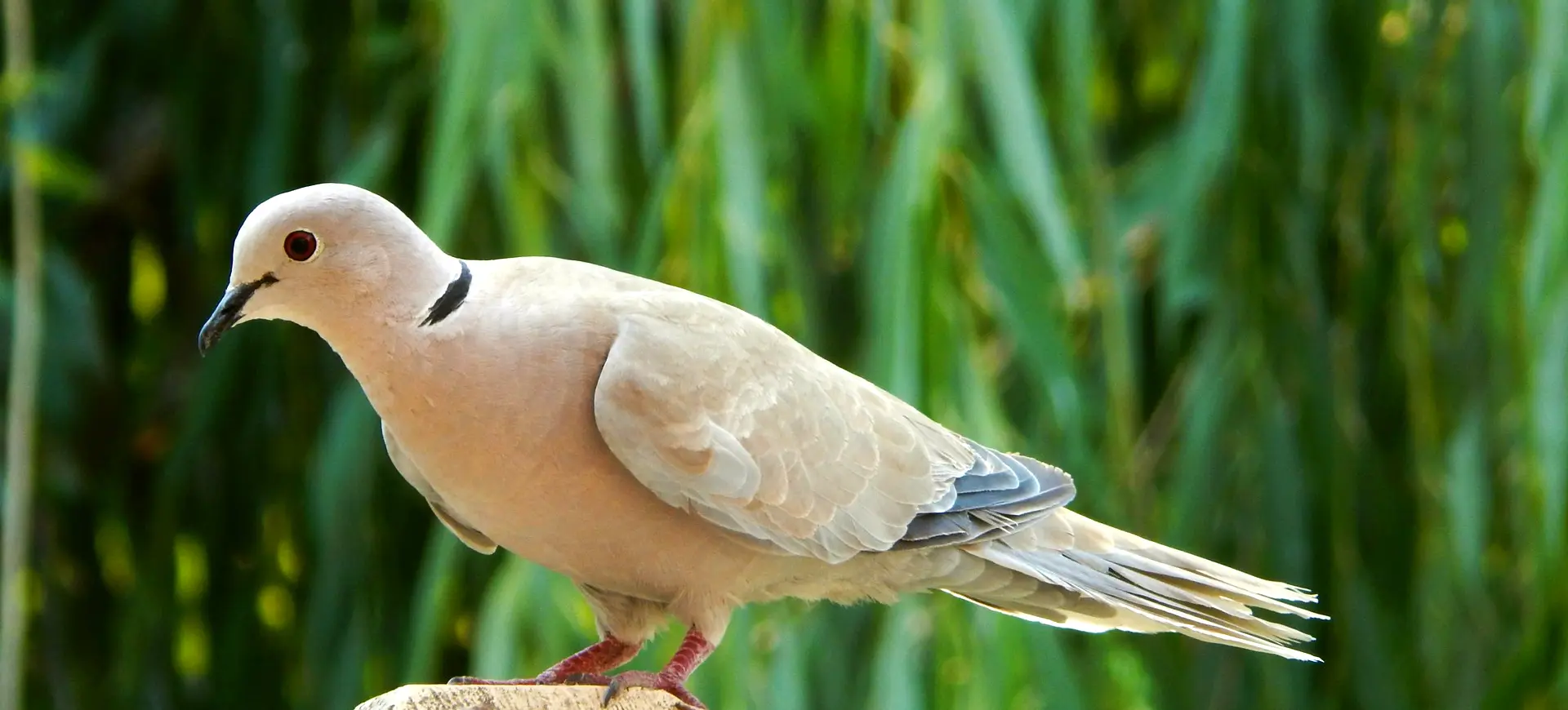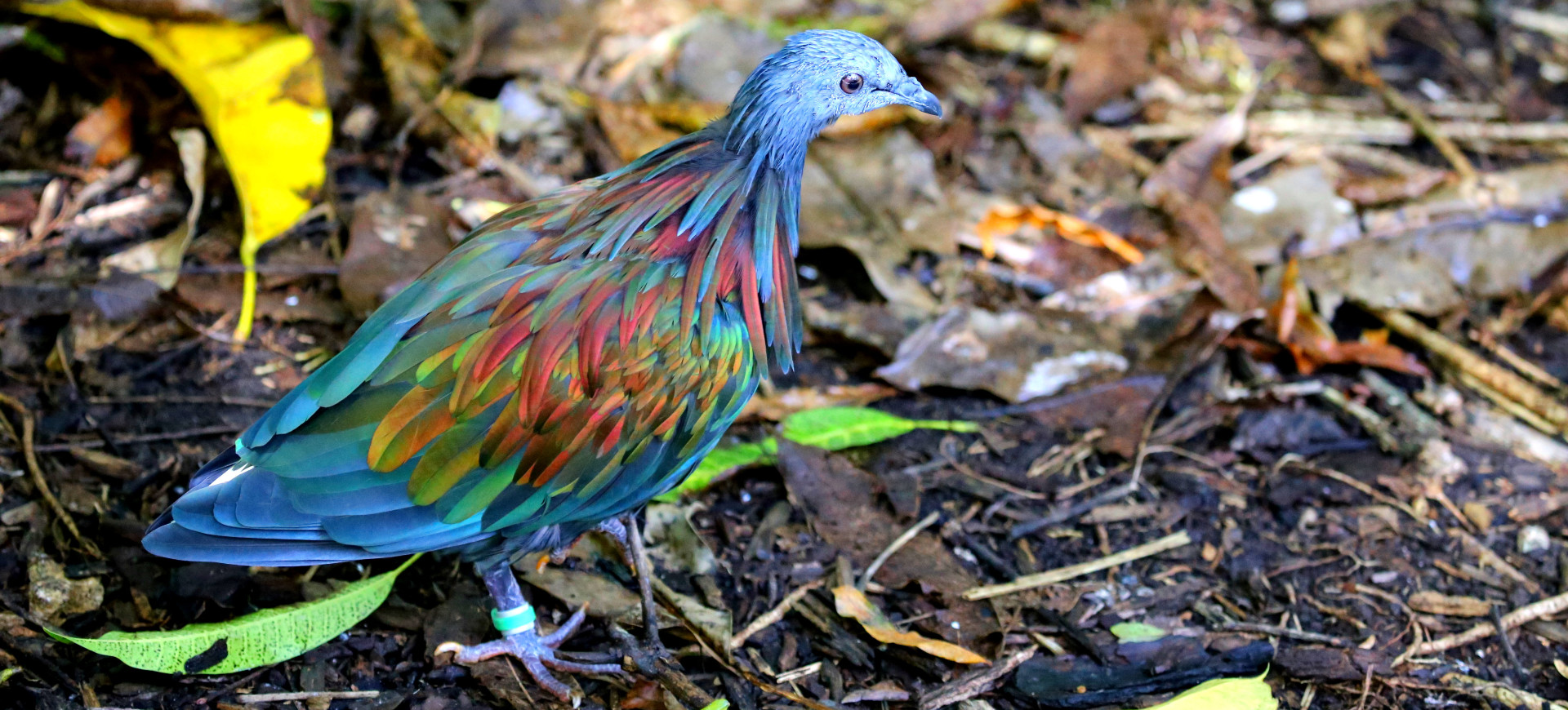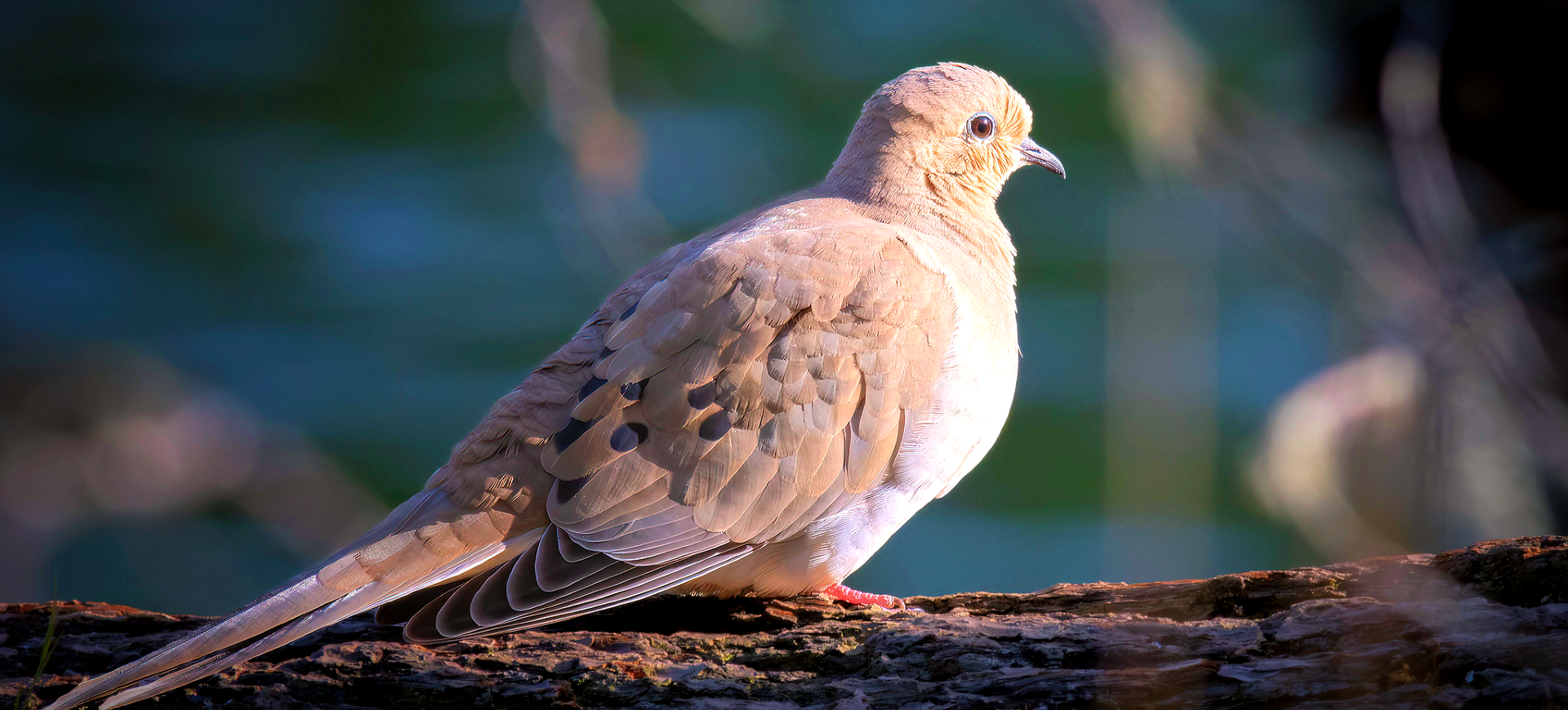Overview
The Crested Pigeon, Ocyphaps lophotes, is a distinctive bird native to Australia, easily recognizable by its elegant crest and striking plumage. This bird exhibits a soft grey color with hints of brown, complemented by a unique crest atop its head, giving it a distinguished appearance among pigeons. The wings are adorned with iridescent patches that shimmer in sunlight, creating a spectacular display during flight. Inhabiting open landscapes across much of Australia, the Crested Pigeon is commonly found in arid and semi-arid areas and suburban parks and gardens, adapting well to human presence.
Crested Pigeons are ground feeders, primarily consuming seeds, which they forage for in open areas, demonstrating their granivorous diet. Their presence in various habitats, from natural bushland to urban areas, showcases their adaptability and resilience. These pigeons are known for the distinctive whistling sound when their wings take off, which is an alarm signal to others. Despite threats from habitat loss and predation, the Crested Pigeon has maintained stable populations thanks to its versatility and ability to thrive in modified landscapes.
The Crested Pigeon’s conservation status is of least concern, reflecting its wide distribution and successful adaptation to altered environments. However, continued efforts to conserve natural habitats and monitor populations are essential for long-term survival. The Crested Pigeon plays a vital role in its ecosystem, particularly in seed dispersal, contributing to the health and regeneration of plant life. Its adaptability and ecological significance make it an important species within the Australian avifauna, deserving of attention and protection.
Taxonomy
Kingdom
Phylum
Class
Order
Family
Genus
Species
Type
Physical Description:
The Crested Pigeon boasts a sleek body with a unique morphology, including a conspicuous thin crest that distinguishes it from other pigeon species. Its feathers are predominantly grey with a pinkish undertone, complemented by striking iridescent patches on the wings that shimmer in sunlight. A thin, black line encircles the bird’s eyes, and its legs and beak are a stark red, adding to its distinctive appearance. Adults typically measure around 30 to 34 centimeters in length, showcasing the species’ moderate size among pigeons.
Notably, the Crested Pigeon exhibits sexual dimorphism, although it is subtle, with males and females being similar in size and coloration. This pigeon’s sleek body aids in its agility and speed during flight, allowing for rapid maneuvers and escapes from predators. Their wingspan, which averages 50 to 55 centimeters, enables efficient flight and the characteristic whistling sound that occurs when they take off or land. The Crested Pigeon’s physical attributes serve aesthetic purposes and play crucial roles in communication and survival.

Lifespan: Wild: ~10 years || Captivity: ~15 years

Weight: Male: 0.44 lbs (200 g) || Female: 0.40 lbs (180 g)

Length: Male: 13.4 in (34 cm) || Female: 12.6 in (32 cm)

Wingspan: Male & Female: 20.9 in (53 cm)

Top Speed: 40 mph (64 km/h)
Characteristic:
Native Habitat:
The Crested Pigeon is endemic to Australia, thriving in a wide range of habitats, including arid desert areas, grasslands, and lightly wooded forests. They are highly adaptable and can also be found in agricultural lands and urban areas, which utilize parks and gardens as their habitat. The presence of water is a critical factor in their distribution, as they need to drink at least once a day. Their adaptability to various habitats has enabled them to colonize a vast Australian continent.
They prefer open and semi-open landscapes, so Crested Pigeons avoid dense forests and heavily wooded areas. They are often seen in pairs or small flocks, although larger congregations can gather where food and water are abundant. This species’ ability to thrive in varied environments has contributed to its widespread distribution, making it a common sight in rural and urban settings. The Crested Pigeon’s habitat preferences reflect its flexibility in nesting and feeding, ensuring its success across diverse Australian landscapes.
Biogeographical Realms:
Continents:
Countries:
Diet:
Diet & Feeding Habits:
Crested Pigeons are primarily granivorous, feeding on various seeds from grasses, herbs, and occasionally grains from cultivated crops. They forage on the ground in flocks, which can sometimes number in the hundreds, especially in areas where food is abundant. The bird’s beak is perfectly adapted for picking up seeds, and its gizzard helps grind the hard seeds it consumes. In addition to seeds, they may occasionally eat small insects, supplementing their diet with necessary proteins.
The Crested Pigeon’s feeding behavior showcases its adaptability to various environments, including urban areas, where it can be seen foraging spilled grains in parks and gardens. Water availability plays a significant role in their habitat preference, as they require regular access to water sources for drinking. The species’ feeding habits have also adapted to seasonal changes, with their diet varying based on the availability of food sources throughout the year. This adaptability ensures their survival across various habitats, from arid regions to urban landscapes.
Mating Behavior:
Mating Description:
Crested Pigeons are monogamous birds, often forming long-term pair bonds with their mates. During the breeding season, males perform elaborate displays to attract females, including puffing up their feathers, fanning their tails, and making distinctive cooing sounds. Both males and females construct nests from twigs and leaves and usually place them in trees or shrubs. The breeding season is influenced by food availability, allowing multiple broods to be raised in a year if conditions are favorable.
The female typically lays two eggs per clutch, which both parents incubate for about 18 days until hatching. The chicks are altricial, meaning they are born blind and featherless, relying entirely on their parents for warmth and food. The young pigeons, or squabs, grow quickly and are ready to leave the nest within three to four weeks. The monogamous nature of the Crested Pigeon and the care provided by both parents ensure a high survival rate for the offspring, contributing to the species’ overall population stability.
Reproduction Season:
Birth Type:
Pregnancy Duration:
Female Name:
Male Name:
Baby Name:
Social Structure Description:
Crested Pigeons exhibit a social behavior that includes forming loose flocks, particularly when foraging or drinking, allowing them to take advantage of safety in numbers. Outside of the breeding season, these flocks provide opportunities for social interaction and collective vigilance against predators. During the breeding season, pairs become more territorial, focusing on nesting and raising their young. Their strong pair bonds and cooperative parenting play a crucial role in the success of their offspring, highlighting the importance of family units in their social structure.
The interaction between Crested Pigeons within flocks and between mating pairs involves a series of vocalizations and body language that facilitate communication and cohesion. The social dynamics of Crested Pigeons, characterized by their flocking behavior and monogamous pairings, contribute to their adaptability and survival. Understanding the social structure of Crested Pigeons provides insights into their behavior and ecological role, emphasizing the complexity of avian societies and the significance of social bonds in the animal kingdom.
Groups:
Conservation Status:
Population Trend:
Conservation authorities classify the Crested Pigeon as Least Concern, reflecting its extensive distribution and the success of its populations across Australia. This status highlights the bird’s resilience and adaptability but underscores the importance of ongoing conservation efforts to address potential threats. Habitat preservation, population monitoring, and public awareness initiatives are crucial for ensuring the Crested Pigeon’s continued stability and health.
Conservation efforts focused on protecting and restoring natural habitats are vital for the survival of Crested Pigeons and the ecological balance of their environments. Engagement with local communities and stakeholders can enhance the effectiveness of conservation measures, promoting practices that benefit both wildlife and human populations. By safeguarding the natural habitats of Crested Pigeons, we can ensure the preservation of their populations and the rich biodiversity of Australia’s landscapes.
Population Threats:
The primary threats to the Crested Pigeon include habitat destruction and fragmentation due to urban development, agriculture, and land clearing. Predation by domestic pets and competition for food and nesting sites with other bird species also challenge their survival. The loss of natural habitats can impact their ability to find food and safe nesting sites, affecting their reproduction and population stability.
Addressing these threats requires a comprehensive approach that includes habitat conservation, sustainable land-use practices, and community engagement. Efforts to control invasive species, protect key habitats, and promote wildlife-friendly urban planning can help mitigate the impact of human activities on Crested Pigeon populations. Public education and awareness campaigns can also significantly foster support for conservation initiatives and protect these unique birds.
Conservation Efforts:
Conservation efforts for the Crested Pigeon focus on habitat protection and the restoration of degraded areas to ensure the availability of food and nesting sites. Initiatives such as reforestation, creating green spaces in urban areas, and protecting natural habitats are critical for their survival. Collaborative efforts involving government agencies, conservation organizations, and local communities can enhance the impact of these initiatives.
Educational programs that raise awareness about the Crested Pigeon and its role in the ecosystem can foster appreciation and support for conservation measures. By promoting the coexistence of human and wildlife populations, we can create sustainable environments that support the needs of Crested Pigeons and other native species. Through habitat conservation, research, and community involvement, we can ensure a bright future for the Crested Pigeon and the diverse ecosystems they inhabit.
Additional Resources:
Fun Facts
- The iridescent wing patches of the Crested Pigeon play a crucial role in communication and courtship, reflecting sunlight in a spectrum of colors.
- Their distinctive whistling sound during takeoff is unique among pigeons and serves as an alarm signal to others.
- Crested Pigeons are highly adaptable and capable of surviving in both natural bushland and urban environments where they have become a familiar sight.
- They are one of the few pigeon species with a crest, which adds to their distinctive appearance and has made them a subject of interest among birdwatchers.
- Crested Pigeons’ diets contribute to the control of weed species, showcasing their role in maintaining ecological balance.
- Crested Pigeons often benefit from supplementary feeding in urban areas, though natural diets are essential for their health.
- Their ability to thrive in altered landscapes demonstrates the potential for successful cohabitation between humans and wildlife.
- Conservation efforts for Crested Pigeons also benefit other species that share their habitat, highlighting the interconnectedness of ecosystems and the importance of biodiversity conservation.












